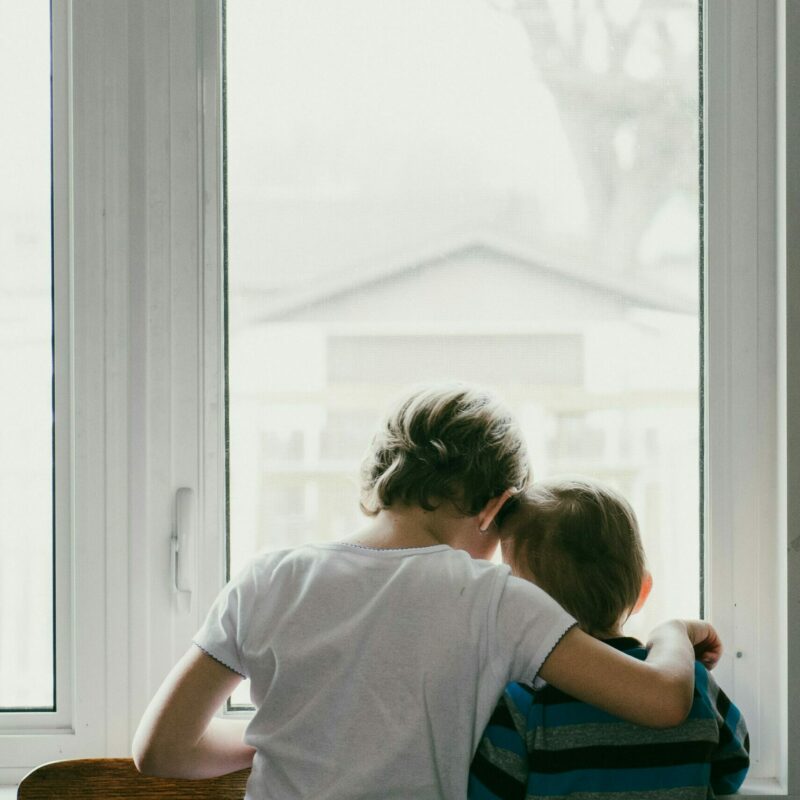Photo by: Omid Armin on Unsplash
“Gratitude unlocks the fullness of life. It turns what we have into enough, and more.”
Melody Beattie
What can research tell us about giving thanks? Gratitude, or the positive thoughts and feelings that people experience when they recognize all the good things in their lives,[1] can unlock thriving.
Why teach our kids gratitude?
If you and your family normally run on high speed, get ready for some good news! Giving thanks is more than just a social nicety. Feeling and expressing gratitude can positively impact both our bodies and minds. Gratitude can increase our physical health and is associated with lower stress levels, better sleep quality, improved immune functioning, and even better cardiovascular health.[2] It can also improve our mental well-being by making us feel happier, more satisfied with our lives, and even decreasing depression and anxiety.[3] Gratitude also helps contribute to a better world, as grateful people are more likely to act prosocially,[4] have a sense of purpose and have stronger relationships with others.[5] In short, gratitude simply feels good. When our bodies experience more positive emotions—like gratitude, hope, and joy—our minds are more likely to expand and help us solve problems more creatively.[6]
How to nurture gratitude
Here are three tips for nurturing gratitude in your kids.
1. Be authentic and specific
When expressing gratitude in front of your children, give gratitude an extra-grateful punch. Be authentic. Say something you really, truly mean. If your first grader brings home a very Picasso-esque picture of your family, for example, pause for a second to think about why you appreciate his/her gesture. If you don’t genuinely appreciate the art itself, you still might appreciate that your child was kind and thoughtful. So, tell your kid why YOU feel grateful.
Next, be specific. While saying thank you is good, the giver and receiver of gratitude will feel even better when the compliment is specific. Try to recognize what this act cost the gift-giver (your child) and how it benefited the gift-receiver (you). In this example, you might say, “Thank you! I love knowing you are thinking of our family and that you took the time to make something that celebrated us.” When we express gratitude in a specific and authentic manner, gratitude is more likely to abound in us.[7]
2. Ask questions!
How can we help our kids think about what they’re grateful for? In a study with over 100 parents, researchers tracked the different ways parents tried to foster gratitude in their children. Researchers found four major opportunities for helping your child learn to feel grateful, which they identify as the “notice-think-feel-do” questions:
- First, ask your children what they notice. What do they have in their lives that they feel grateful for? Are they grateful beyond the physical gift (e.g., the caring person who bought them the gift)?
- Second, ask your child what they think. Why did they receive a gift? Did the gift-giver have to buy your child a gift? As a result, does your child owe the gift-giver something? If your child answers no to these questions, they may feel even more grateful.
- Third, ask your child what they feel. How do they internally feel about receiving a gift? Does it make them feel happy? Why? What about the gift makes them feel good?
- Lastly, do. What does receiving this gift make your children want to do? Does it make them want to share this feeling with others? Does it make them want to give something in return, or give something to someone else (pay it forward)?
Asking questions about what your children notice, think, feel, and want to do can help them connect their grateful feelings to their lives in a deeper way.[8],[9]
3. A little goes a long way
More is not always better! It may seem intuitive that the more gratitude we practice, the better we feel. However, research suggests that practicing the same gratitude exercise too often can decrease its effectiveness. For instance: if you write a gratitude letter every single day, you may eventually become bored to the point where it doesn’t improve your gratitude anymore. A study found that participants who counted their blessings three times a week reported smaller gains in happiness compared to those who practiced this once a week.[2]
Sticking to a practice
Research recommends mixing things up! Try different practices to keep things novel, or if you find a favorite practice stick to practicing it just once a week. Just like physical exercise, everyone has to find the mental exercises that work best for them. We recommend trying a few different gratitude practices to see which you and your kids enjoy. Some favorites include writing a gratitude letter, listing three good things that happened in the day, or going for a gratitude (or savoring) walk.[3]
Endnotes
[1] McCullough, Kilpatrick, Emmons, & Larson, 2001
[2] Emmons & McCullough, 2003; Hill, Allemand, & Roberts, 2013
[3] Davis, Choe, Meyers, et al, 2016
[4] Bartlett & DeSteno, 2006
[5] Algoe, Gable, & Maisel, 2010
[6] Kok & Fredrickson, 2013
[7] Baumsteiger, Mangan, Bronk, & Bono, 2019
[8] Hussong, Langley, Coffman, Halberstadt, & Costanzo, 2018
[9] Hussong, Langley, Thomas, Coffman, Halberstadt, Costanzo, & Rothenberg, 2018
Continue Exploring

Practices
Raising Prosocial Kids
What conversations should we have with young people to help them develop? How do we encourage them to offer their gifts to the world?

Practices
A Practice: How to Co-regulate With Your Kids
Our kids can regulate when we help them feel safe, seen, soothed, but we have to start with ourselves. Use the 4 S's to explore your needs.

Thriving
The Latest Parenting Research on Raising Resilient Kids
How do we raise more resilient kids? What advice can we get from research? Thrive writer, Amy Dunn explains.

